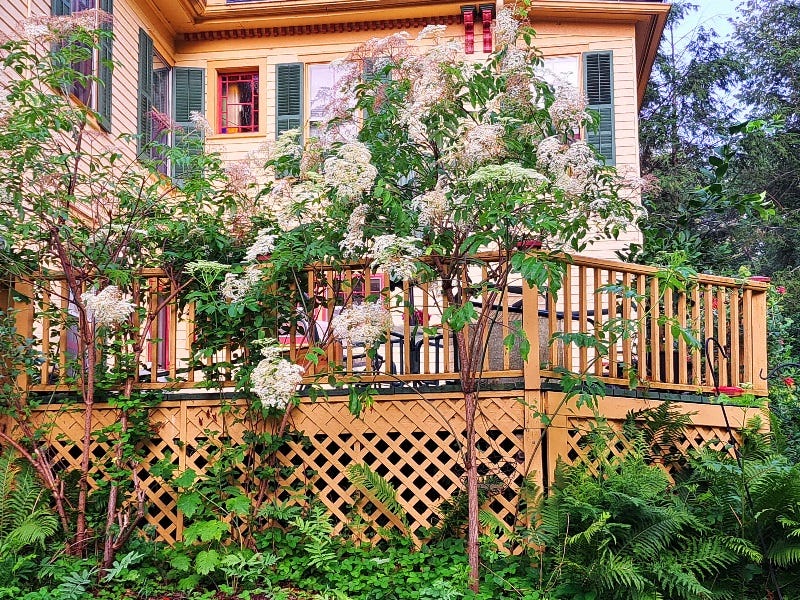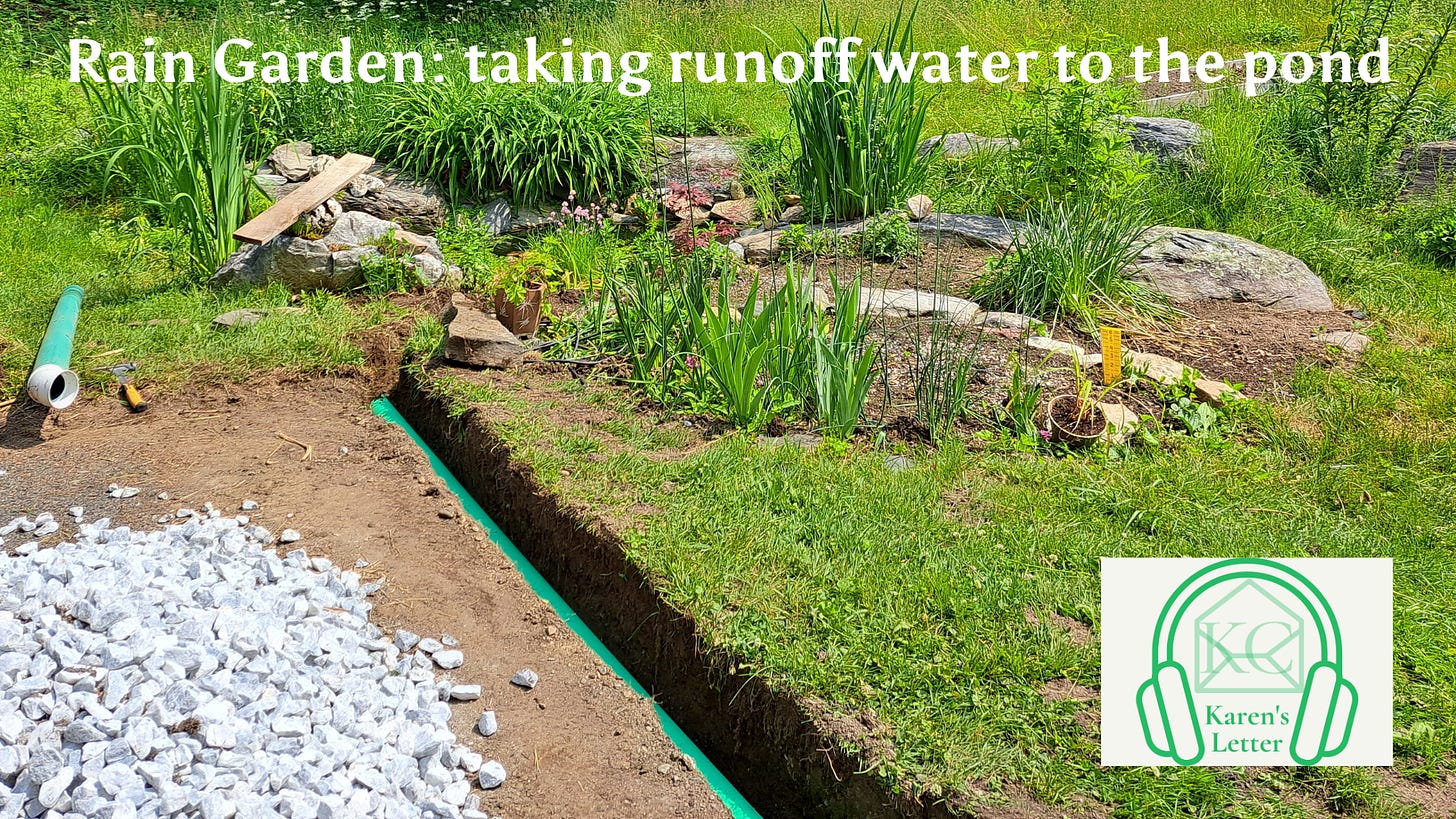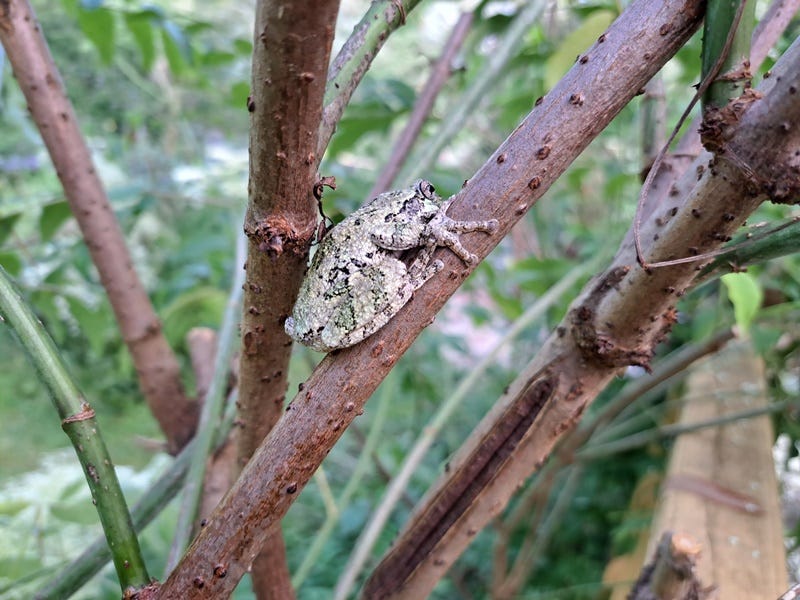Water, water, every where.
Or heat. Or drought. Or wind and fire.
I’ve been reminding myself to be grateful for every perfect day that comes, and to prepare for rough times ahead.
The northeastern United States, where I live now, has had its first taste of wildfire smoke, something familiar already to many. And this week we had record rain and flooding.
It wasn’t so bad here in the Berkshires, though I saw my landscaped stream-bed (technically, a swale) turn into a full flowing stream. Vermont, to the north, has had it much harder, with roads ruined and towns flooded.
Every time there’s a big storm, we hear about flooded basements. I went down often to check mine, and for the first time cleaned out the sump pump in preparation for the storm.
The sump pump is important, but I want to explain the other things I’ve done over the years to make my 1868 house, which stands on a hillside filled with natural springs, more resilient to storms. I’m going to be increasing these efforts, but even what’s in place now is making a real difference.
And the redirection of water away from a house can have other benefits - especially since drought remains a genuine concern here as well as elsewhere.
The idea of a “rain garden,” which I first learned about from an article in our Encyclopedia of Sustainability, is to keep as much of the rain that falls in place where it can help gardens to grown, not simply while it is raining but in the days between. Town and city planners are doing more of this type of landscaping, shaping swales and berms, making shallow areas in which moisture-loving plants can thrive. This reduces the need for watering as well as the risk of flooding and drainage system overload.
In my backyard, this started with the quasi-reconstruction of a stream that once ran across the property. This moved water away from the house, and we have not had a flooded basement since then.
At the same time, we planted large natives - yellow flag irises and Joe Pye Weed - along the stream, and then ringed the deck, where a lot of water used to collect, with elderberry bushes (which love water and produce flowers for cordial and berries for the birds).
That was just a beginning. I started going outside during heavy rain, under a big umbrella, and stomping around in flip-flops to see just how the water was running, across the driveway, lawn, under fences, and on to the town drains on the street.
After a couple of dry summers, I hated to see that water disappearing into the drains when I know my plants want a deep, long, sustained soaking.
And it’s not so hard to redirect water. It seeks the lowest level, and sometimes it doesn’t take more than a small channel to get things started - the water will often then find its own natural path.
After Monday’s big rain, and some time taking videos under the umbrella, I have plans to create some new channels, that could drastically change the possibilities for planting in certain places.
And the French drain, newly in place and designed to direct rainwater away from the house and into the pond, has certainly proved its worth.
Check with your town or city for information about rain gardens, stormwater management, and recommended shrubs and trees. Here’s an example from PennState Extension. The Commonwealth of Massachusetts even has a 12-page guide to rain gardens.
I keep hearing from people in the middle of the United States where it is very dry and very hot. I intend to be thankful for every drop of rain that falls this month (and there is plenty in the forecast), and to see how much of it I can hold onto, for drier days ahead.
PS: One great thing about the rain this week is that the tree frogs were calling so loudly I finally managed to spot one, well camouflaged on one of the elder bushes.









Always true H2O. H2O.......